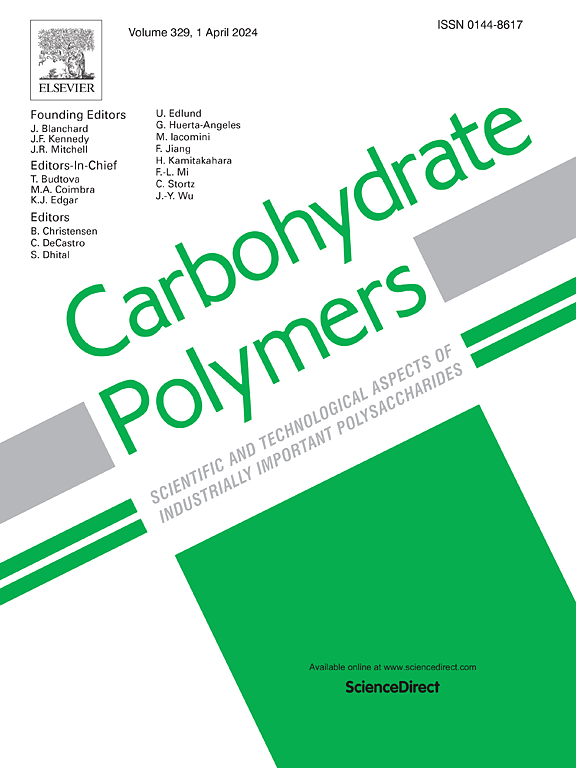An injectable cyclodextrin extended polyurethane/carboxymethyl cellulose hydrogel for controlled release of insulin: In-vitro and in-vivo diabetic animal model study
IF 10.7
1区 化学
Q1 CHEMISTRY, APPLIED
引用次数: 0
Abstract
Diabetes is a persistent medical condition causing significant anguish for individuals and imposing substantial financial burdens on healthcare systems globally. The inability of human body to produce adequate insulin as a result of insulin resistance or β-cell loss upsets the glucose homeostasis, causing the blood glucose level to rise suddenly. Diabetic patients must get therapy to maintain their blood glucose levels within normal range, preferably through emulating normal insulin secretion, to reduce consequences such as organ deterioration. In order to preserve natural glucose balance, frequent subcutaneous insulin injections are the standard and the last line of treatment. Nevertheless, frequent and continuous subcutaneous injections are associated with low patient compliance and localized insulin amyloidosis. These issues can be resolved with steady and sustained insulin delivery. In this context, to provide sustained insulin delivery over an extended period of time for regulating blood glucose, an injectable cyclodextrin extended polyurethane (PU-co-CD)/CMC hydrogel has been designed. Due to unique composition of insulin-loaded PU-co-CD copolymer, the carboxy methyl cellulose (CMC) forms an injectable hydrogel. The synthesis and processing of this chain extended copolymer have been validated through spectroscopic, chromatographic, and rheological investigations. In diabetic Swiss albino mice, subcutaneous injection of PU-co-CD encapsulated insulin in a gel medium regulates insulin release for up to 3 days, compared to <12 h with conventional insulin injection. PU-co-CD-gel is a promising drug delivery vehicle due to its biocompatible and biodegradable nature and the formulation demonstrates sustained insulin delivery in diabetic condition without affecting any body organ, as observed through histopathology.

求助全文
约1分钟内获得全文
求助全文
来源期刊

Carbohydrate Polymers
化学-高分子科学
CiteScore
22.40
自引率
8.00%
发文量
1286
审稿时长
47 days
期刊介绍:
Carbohydrate Polymers stands as a prominent journal in the glycoscience field, dedicated to exploring and harnessing the potential of polysaccharides with applications spanning bioenergy, bioplastics, biomaterials, biorefining, chemistry, drug delivery, food, health, nanotechnology, packaging, paper, pharmaceuticals, medicine, oil recovery, textiles, tissue engineering, wood, and various aspects of glycoscience.
The journal emphasizes the central role of well-characterized carbohydrate polymers, highlighting their significance as the primary focus rather than a peripheral topic. Each paper must prominently feature at least one named carbohydrate polymer, evident in both citation and title, with a commitment to innovative research that advances scientific knowledge.
 求助内容:
求助内容: 应助结果提醒方式:
应助结果提醒方式:


